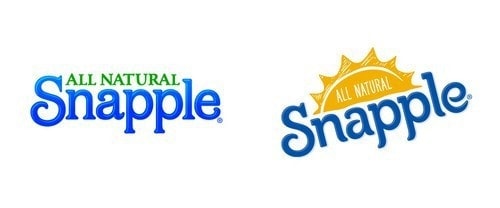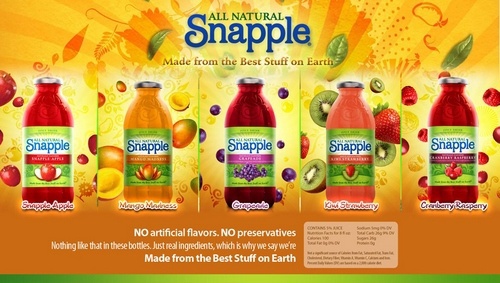The Marketing mix of Snapple analyses the 4Ps of Snapple, including the Product, Price, Place, and Promotions. Snapple is an American-origin brand associated with the beverage industry. It is a subsidiary of its parent company, Dr Pepper Snapple Group. The company was founded in 1972 as Unadulterated Food and was renamed to its present name, Snapple, in 1980. Its co-founders were Arnold Greenberg, Hyman Golden, and Leonard Marsh. It faces competition from the following.
- Nestea
- Lipton
- Fruitopia
- Arizona
- Ocean Spray
- Napa Quenchers
- Napa Naturals
- Ginseng Rush
About Snapple
- Type: Beverage company
- Industry: Beverage
- Founded: 1972
- Founders: Leonard Marsh, Hyman Golden, and Arnold Greenberg
- Headquarters: Brooklyn, New York
- Area served: Worldwide
- Current CEO: Bob Gamgort
- Number of employees: Over 2,000 employees worldwide
- Major Products: Iced tea, juice, and other drinks made from natural ingredients.
Table of Contents
Snapple Product Strategy
Snapple manufactures, develops personal selling, and markets numerous drinks like regular and diet tea, bottled water, lemonade, and juice drinks. It is also available in aluminum cans. Snapple beverages are fortified with minerals and vitamins to make them delicious, healthy, and tasty.
The new Product Mix of Snapple in 2023 is as follows (Source).
- Fruit Juices: Snapple offers a variety of fruit juice drinks, often made from a blend of different fruit juices. These may include apple, grape, mango, and mixed berry flavors.
- Teas: One of Snapple’s most popular product lines is its iced tea. These teas come in various flavors, including classics like lemon, peach, and raspberry, and green and black tea varieties.
- Diet Drinks: For health-conscious consumers, Snapple provides diet versions of its teas and juices, which are lower in calories and sugar.
- Lemonades: Snapple also produces different flavored lemonades, including traditional lemonade and variations with other fruit flavors.
- Seasonal Specials: Occasionally, Snapple releases limited edition or seasonal flavors, which could be based on specific fruits or unique combinations inspired by different seasons or holidays.
Snapple’s diverse beverage portfolio features enticing options like:
- Snapple Diet Raspberry Tea
- Snapple Diet Peach Tea
- Snapple Diet Cranberry Raspberry
- Snapple Raspberry Tea
- Snapple Lemon Tea
- Snapple Cranberry Raspberry
- Snapple Raspberry Peach
- Snapple Lemonade
Snapple Place Strategy
Snapple is an American company that started its operations from East Meadow in New York. Its headquarters are based in Plano, Texas. It spread its product presence in international markets to countries like Greece, Denmark, Sweden, Germany, Norway, Ireland, and the United Kingdom. By 1992, Snapple had a unique distribution policy. It expanded its distribution channel to include every important city in the United States by signing contracts with several beverage distributors. It did not have its own stores or manufacturing facilities but signed deals with thirty bottlers and was thus able to keep its overhead low.
Here’s the place strategy of Snapple.
- Wide Retail Distribution: Snapple products are widely available in various retail outlets, including supermarkets, convenience stores, and vending machines. This broad distribution ensures that consumers can easily find and purchase their products in many locations.
- Online Sales Channels: Snapple has embraced e-commerce, offering its products through online retailers and its website. This approach caters to the growing number of consumers who prefer shopping online for convenience.
- International Presence: Snapple has expanded its market reach beyond the United States, making its products available in several international markets. This global expansion strategy helps to increase brand recognition and cater to diverse consumer tastes worldwide.
- Partnerships and Collaborations: Snapple often partners with other food and beverage companies or retailers for co-marketing opportunities. These collaborations can include special promotions, limited edition flavors, or joint marketing efforts and campaigns.
- Strategic Placement in Food Service Establishments: The brand is strategically placed in restaurants, cafes, and other food service establishments. This diversifies their presence and introduces the brand to consumers who may not encounter it in retail settings.
Snapple Pricing Strategy
Snapple is a non-carbonated drink projected as a premium product with innovative flavors. Its main mantra is 100% Natural, and it has targeted the health-conscious and the young generation as its potential customers. Snapple has adopted a premium pricing policy because of its superior product quality. At a time when every beverage industry has adopted a competitive strategy, Snapple’s premium pricing stands out and creates a successful brand equity and a distinctive image of its own.
Snapple’s pricing and marketing strategy is a well-calibrated mix of market penetration and value-based pricing, aligned with its brand positioning and customer expectations. Here’s a breakdown of this strategy:
- Competitive Pricing: Snapple positions its products at a competitive price point within the beverage market. By setting prices comparable to other premium non-alcoholic beverages, Snapple ensures its products are affordable yet perceived as high-quality options.
- Value-Based Pricing: Understanding its consumer base, Snapple aligns its prices with the perceived value of its products. The brand capitalizes on its reputation for using natural ingredients and offering various unique flavors, justifying a slightly premium price compared to standard soft drinks.
- Psychological Pricing: Snapple often employs psychological pricing strategies, such as setting prices just below a whole number (e.g., $1.99 instead of $2.00). This approach makes the products appear more affordable and can increase consumer appeal.
- Promotional Pricing: To attract new customers and retain existing ones, Snapple periodically runs promotions, discounts, and bundled offers. This strategy boosts short-term sales and encourages trial among potential new customers.
- Dynamic Pricing in Different Markets: Recognizing the diverse economic conditions in its global market, Snapple adopts dynamic pricing. This means adjusting prices based on the local purchasing power, competition, and distribution costs in different regions to maximize market penetration while maintaining profitability.
Snapple Promotion Strategy
Snapple has always believed in the power of advertisement and has launched several campaigns over the years to create further brand loyalty and awareness and sell more. Advertisements launched in the early 1990s had Wendy Kaufman interacting with Snapple fans via letters. In 1992, it launched new advertisements on television with one of its most popular taglines Made from the best stuff on earth. Its radio commercials featured Rush Limbaugh and Howard Stern.
In establishing Snapple’s market presence, strategic market research informed a robust product portfolio, highlighted in the Harvard Business Review for its unique value proposition. Leveraging distribution agents, Snapple Grapeade reached its target market, fostering high brand awareness through innovative product packaging in the competitive beverage industry.
Snapple was aware of marketing research on the effect of celebrity endorsements on consumers and roped in tennis star Jennifer Capriati as its brand ambassador. In October 2003, it became a sponsor of the New York City Public School System to make its product the official beverage of New York City. Snapple was the primary sponsor of Marco Andretti’s IndyCar Series from 2014 to 2016 and the official beverage sponsor of seasons seven to nine of America’s Got Talent.
Some Recent Video ads and Print ads for Snapple are:
https://youtu.be/nvdw_0uloAE
Liked this post? Check out the complete series on Marketing Mix

